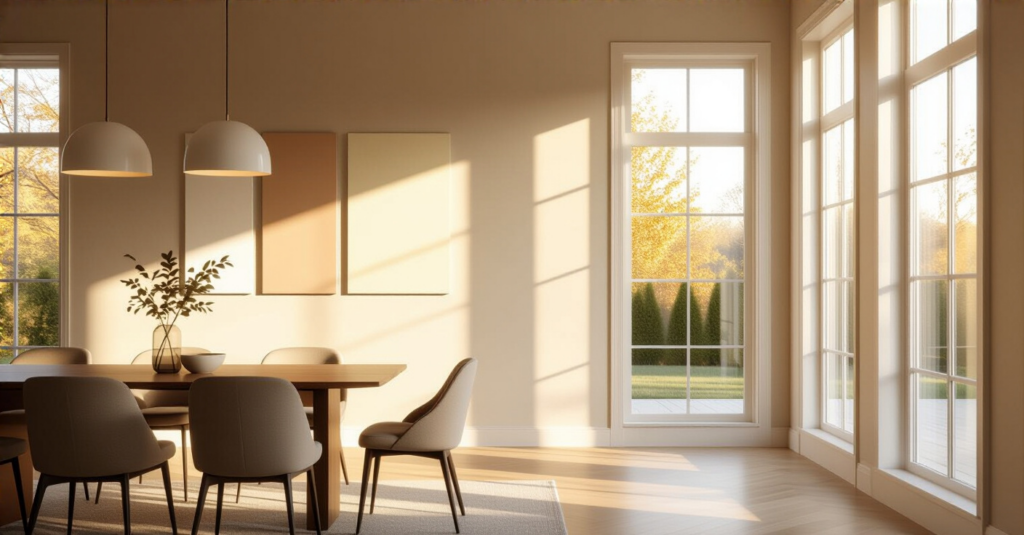Of course. It’s funny, people think picking a paint color is the easy part, but it’s where the whole heart of a room is decided. Here’s how I think about it…
I used to think painting a room was the simplest thing in the world. Just pick a lovely color from a tiny paper chip, right? Oh, I learned my lesson the hard way in my very first little cottage nook. I fell deeply in love with a color called “Sunlit Meadow,” a soft, buttery yellow that looked like happiness itself on that little card. I painted the entire space, stepped back, and my heart sank. Under the single north-facing window, it wasn’t a sunlit meadow at all; it was a sickly, sour lemon.
That little nook taught me that a room has its own soul, its own light, its own stories to tell. The paint you choose isn’t just color; it’s the air the room breathes. It’s the backdrop for late-night whispers, bubbling laughter, and quiet morning teas. So, before you fall for a paint chip, let’s have a little chat, just you and me, about how to choose a color that will love your room back.
Laying the Foundation: Before You Even Dream of a Color
Before we get lost in a sea of beautiful swatches, we have to do a little bit of listening. Your room is already telling you what it needs. We just have to learn its language. This part is all about quiet observation, about understanding the light, the space, and the treasures you already hold dear.
1. Become a Sun-Watcher in Your Own Home
You know what people always ask me? “Sage, why does the color on my wall look nothing like the sample?” And my answer is always the same: you haven’t properly introduced your paint to the light. The sun is a traveling artist, painting your room with different brushes from morning to evening. A north-facing room gets a cool, consistent, almost watercolor light, which can make a lovely gray feel like a cold winter fog. A south-facing room gets a strong, golden light that can turn a gentle terracotta into a fiery blaze.
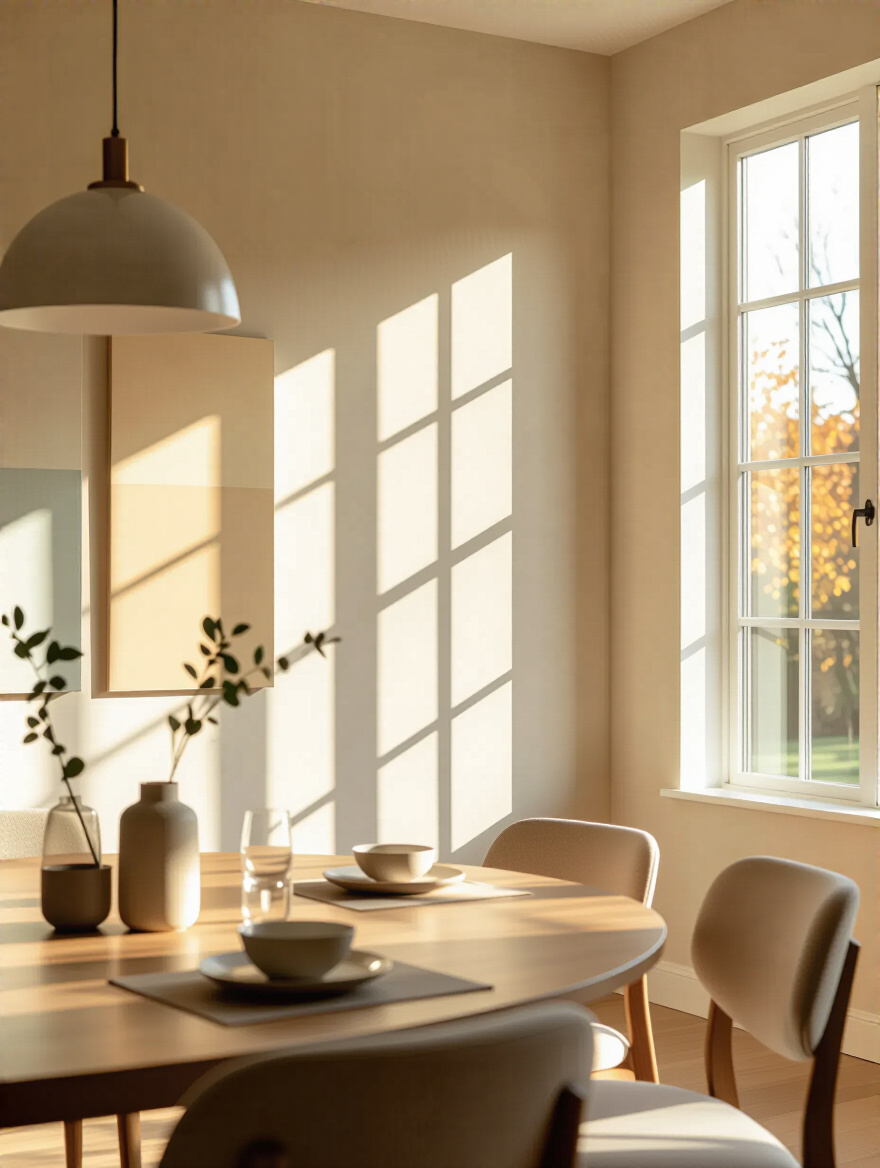
To get this right, you need to become a sun-watcher. Spend a whole day just noticing how the light moves across your walls. What does it look like in the soft dawn? In the bright afternoon? As dusk settles? The color you choose has to be beautiful in all of them. The biggest mistake is falling in love with a color under the harsh fluorescent lights of a hardware store. That’s not the light it will live in.
After you’ve watched the light dance through your dining space, we need to think about how the room feels in its size.
2. Decide if the Room Needs a Hug or a Deep Breath
Color is a bit of a magician. It can pull the walls in for a cozy, intimate hug or push them out to make a small room feel like it can finally take a deep, airy breath. It’s not just about what looks pretty; it’s about how you want to feel when you’re gathered around the table. Do you have a grand, soaring space that sometimes feels a little lonely? Or a sweet, small nook that can feel a bit crowded?
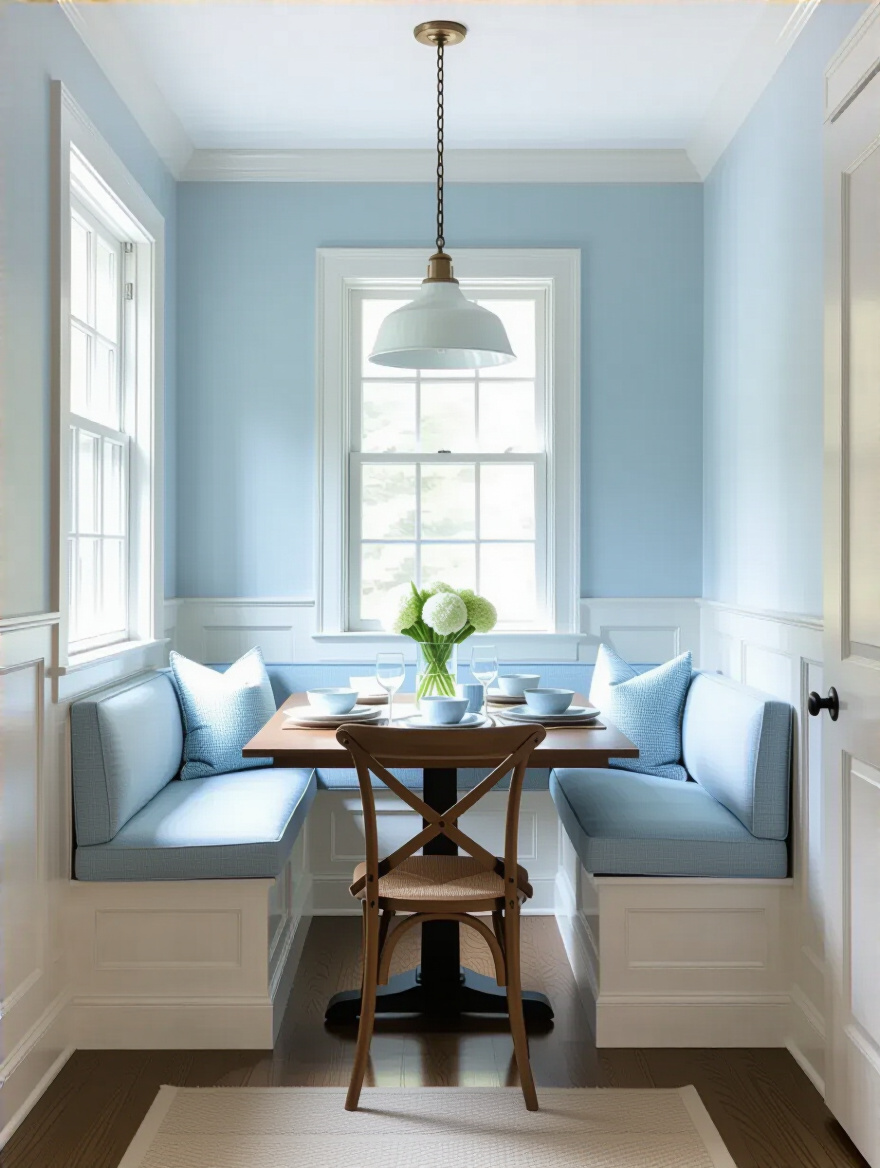
For those big, echoey rooms, a deeper, warmer color is like a soft shawl. Think of a rich, moody forest green or a warm, plummy burgundy. They absorb the light and make the space feel hushed and wonderfully intimate, encouraging everyone to lean in a little closer. For smaller spaces, we want colors that reflect the light, like pale sky blues, the softest creams, or a gentle sage green. These shades don’t shout; they whisper, making the walls feel like they’re stepping back to give you more room.
Now that we’ve considered the room itself, it’s time to look at the beautiful things you’ve already filled it with.
3. Let Your Dearest Belongings Tell Their Color Story
Can we just talk about the biggest piece of baloney I hear? “Pick the paint color first.” Oh, goodness, no. That’s like picking out your necklace before you’ve even chosen the dress! Your furniture, your rug, that beautiful piece of art you inherited from your grandmother—these are the heart of your room. The paint color is simply the supporting character that makes them shine.
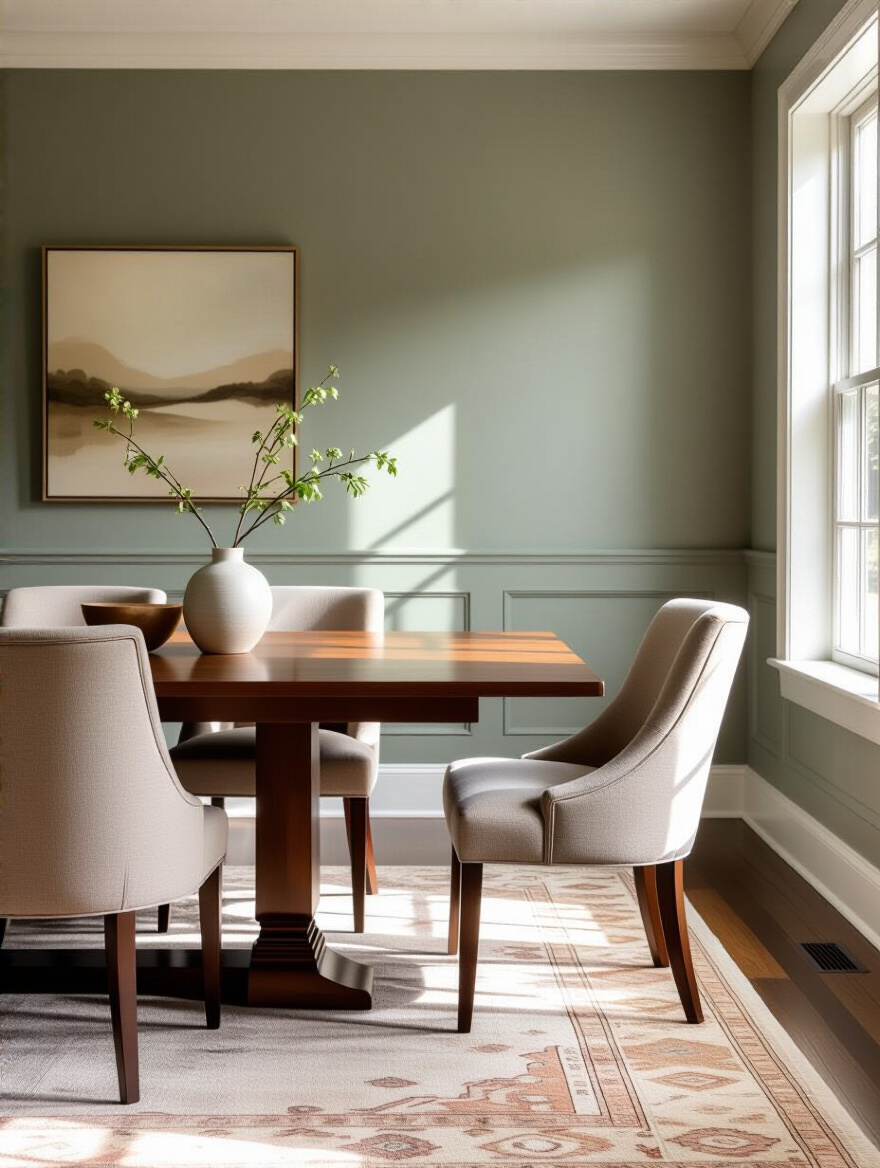
I once worked with a client who painted her dining room a cool, trendy gray, only to find it made her beloved cherry-wood table look dull and sad. The warm, reddish soul of the wood was fighting with the cold, blueish undertone of the paint. We had to find a paint color that listened to the table. We found a soft, warm “greige”—a gray with beige undertones—and suddenly, the table came alive again. The wall color held it in a gentle embrace instead of arguing with it. So, look to your largest, most permanent pieces and pull a quiet, gentle color from them.
From the things you own, we turn to the feelings you wish to create.
4. Ask Yourself: Does this Room Whisper or Laugh?
Before you even touch a paint brush, close your eyes and imagine the perfect evening in your dining room. What does it sound like? Is it full of raucous laughter and storytelling, with friends lingering long after the plates are cleared? Or is it a calm sanctuary for quiet family dinners, a place of peace and gentle connection? The atmosphere you desire is the most important guide you have.
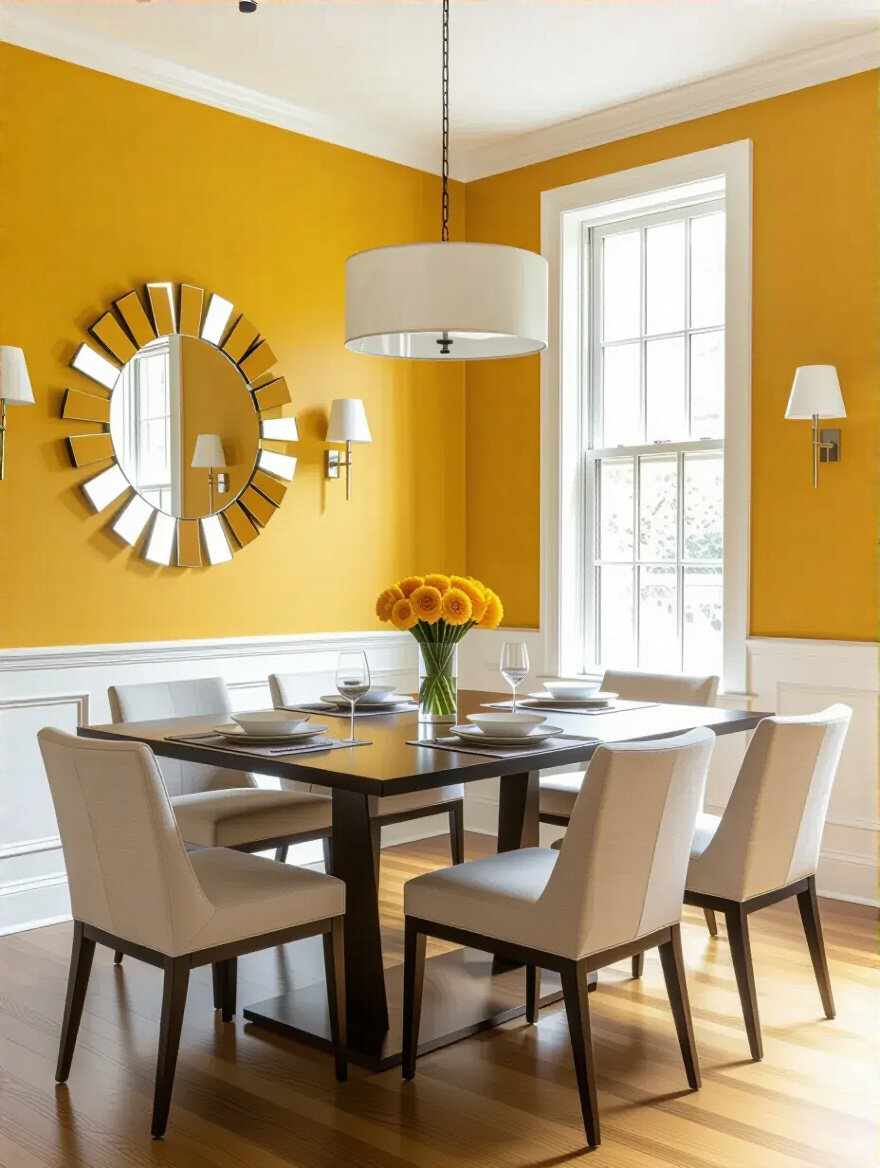
Warm, sunny colors—like ochre, terracotta, and soft corals—are wonderful conversationalists. They stir up energy and appetite and make a room feel convivial and alive. Cool, tranquil colors—like soft blues and misty greens—encourage quiet and restfulness. They create a space that feels like a serene escape. Defining this mood is your true north. It keeps you from getting distracted by a trendy color that might be beautiful, but just isn’t right for the story you want your home to tell.
Your dining room’s story also needs to make sense with the rooms around it, especially in our modern, open homes.
5. Weave a Color Thread Through Your Home
In older homes, rooms were like separate little boxes, each with its own personality. But today, so many of our homes flow from one space into another. The dining room drifts into the living room, which might peek into the kitchen. If you choose a color in isolation, you risk creating a home that feels choppy and disjointed, like a book with chapters from different stories.
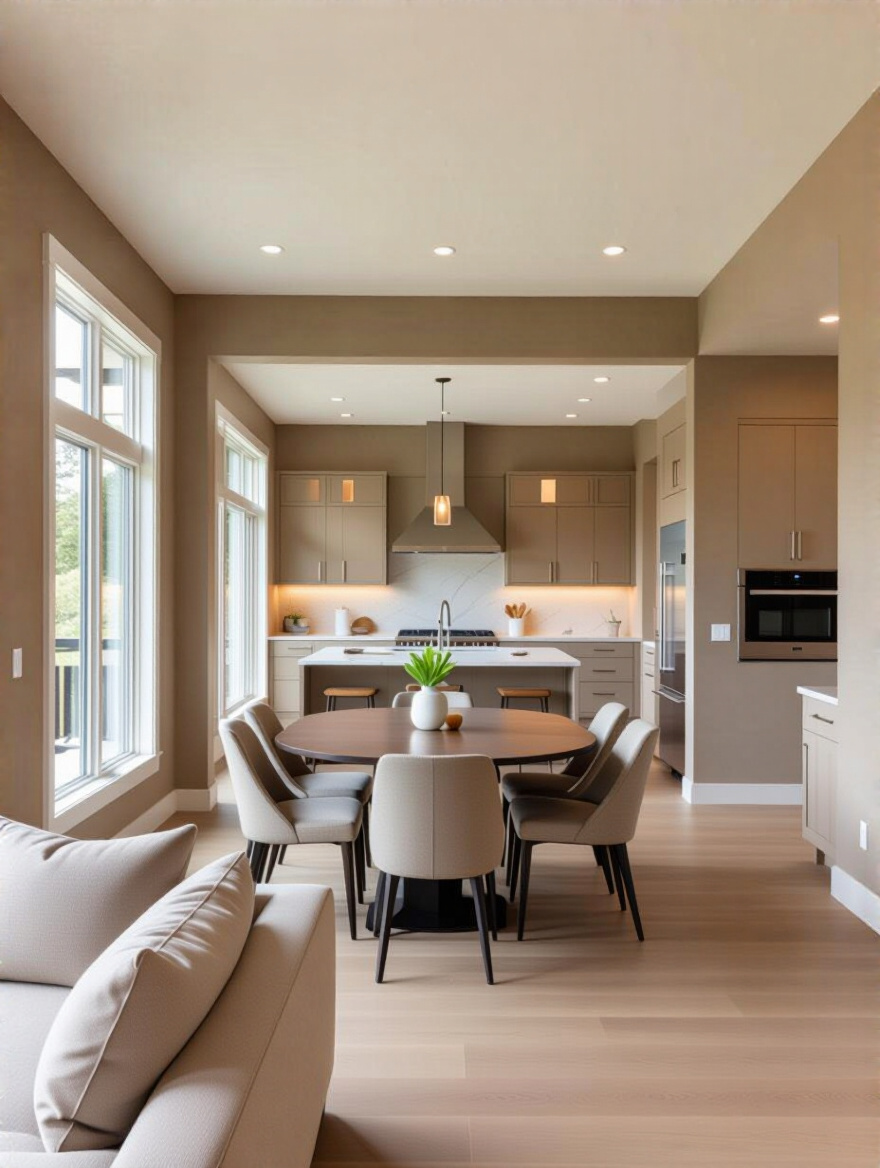
The secret is to think of a “whole house” color story. It doesn’t mean every room has to be the same color! Heavens, no. But the colors should feel like they’re part of the same family. They should harmonize, like different notes in a single, beautiful melody. A soft sage green in the dining room might be cousins with the creamy white in the living room and the warm greige in the entryway. When you stand in one room and look into the next, the view should feel seamless and intentional, like it was all meant to be together.
Choosing Your Palette: Listening to What the Colors Want to Say
Now for the truly delicious part—choosing the colors themselves. This isn’t just about picking what’s pretty. Colors have their own personalities and they bring a certain kind of magic into a room. Let’s explore which kind of magic you want to invite to your table.
6. Wrap Your Room in a Sun-Drenched Hug with Warm Tones
If your dream is a dining room that feels like a perpetual golden hour, where conversations bubble up as warmly as a pot of soup on the stove, then warm tones are your dearest friends. Think of rich terracottas that feel like a sun-baked path, gentle yellows like fresh-churned butter, or the soft blush of a perfectly ripe peach. These colors are full of welcome and hospitality.
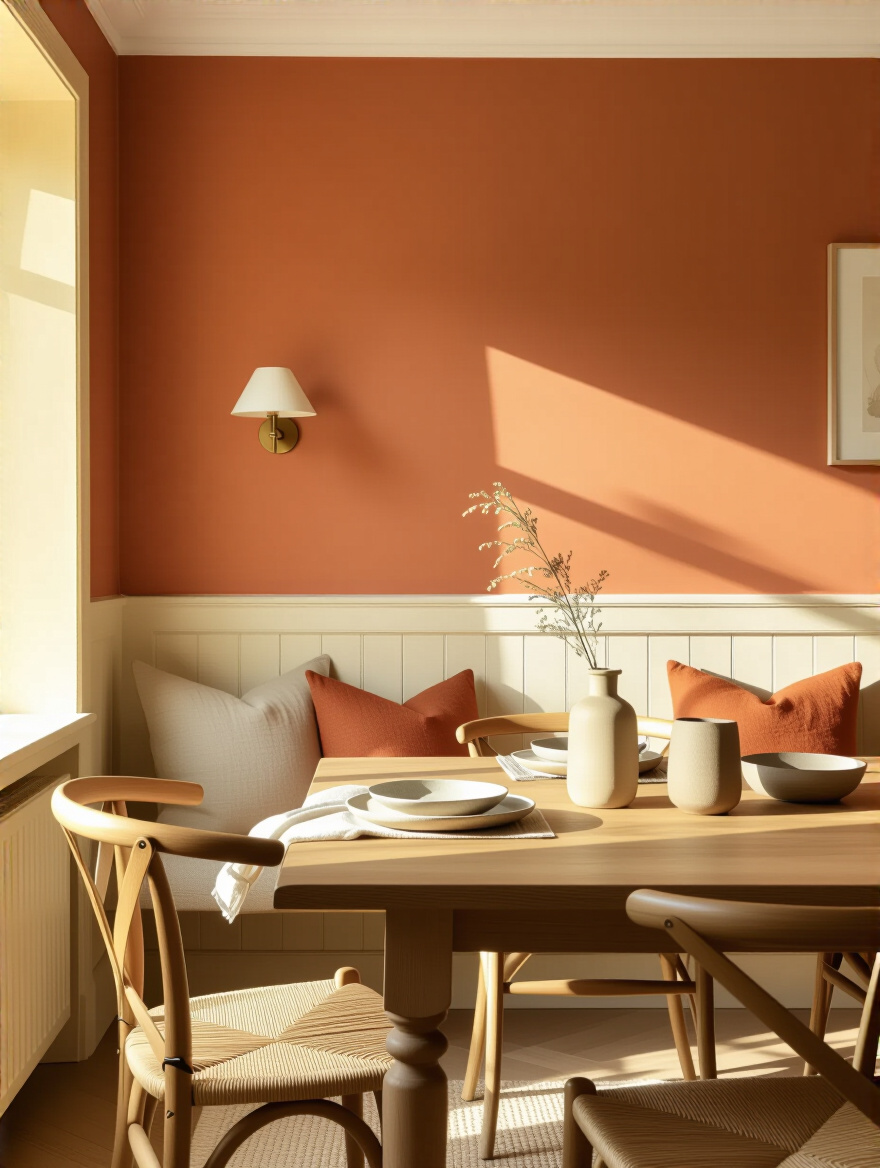
I find that warm tones are wonderfully forgiving and make everyone look just a little bit rosier and healthier in their glow. They create a natural sense of intimacy, making guests feel immediately at ease. To keep them from feeling too overwhelming, I love to pair them with Natural textures. Imagine a soft terracotta wall behind a rustic wooden table, with linen curtains and a simple wool rug. It’s a space that doesn’t just look warm; it feels warm, through and through.
For a different kind of magic, one of calm and grace, let’s turn to the cooler side of the garden.
7. Find Serenity and Space with Cool Hues
Cool colors—the blues of a twilight sky, the greens of a misty morning, the soft purples of a field of lavender—bring a quiet, soulful poetry to a room. They are the color equivalent of a deep, cleansing breath. These hues have a wonderful way of making a space feel more expansive and serene, making them perfect for smaller dining areas or for creating a sophisticated, calming atmosphere.
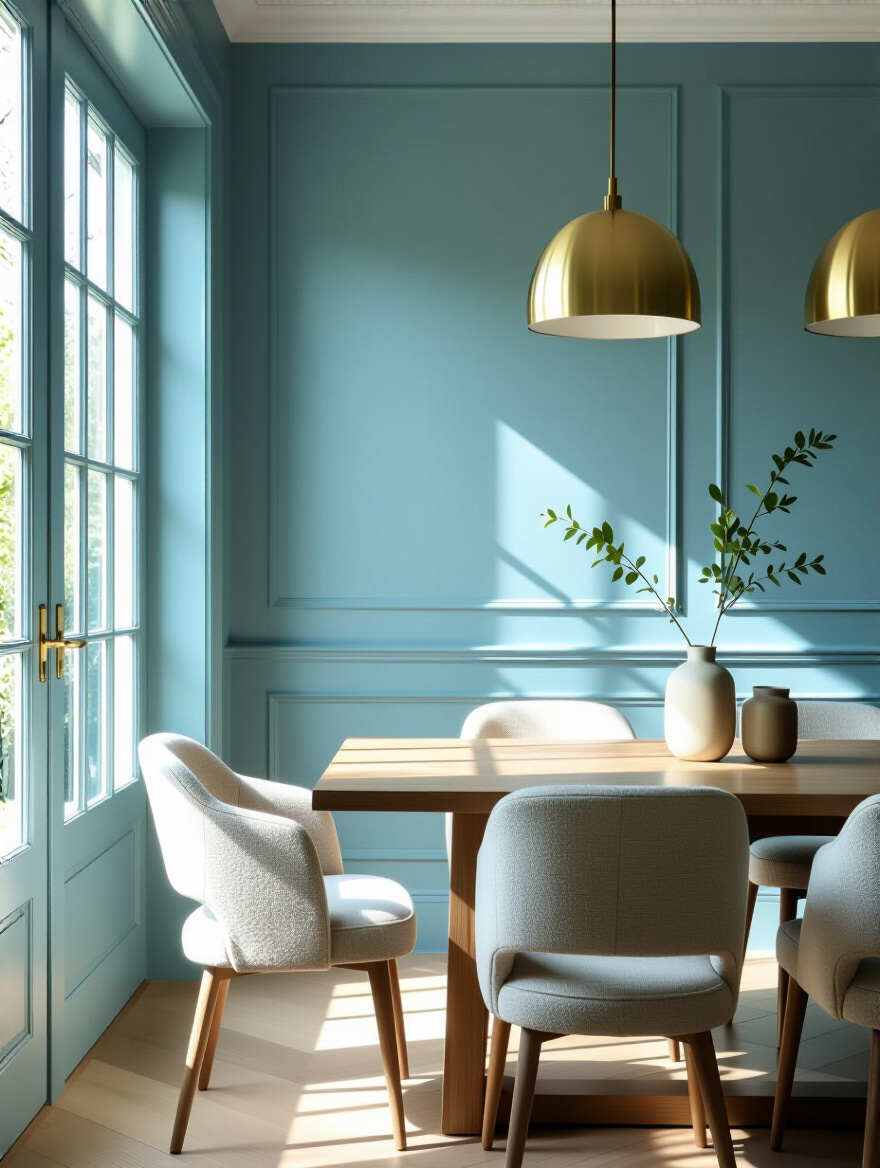
The only secret to working with cool colors is to not let them become cold. The key is balance. I always bring in warmth through other elements. Picture a room painted in a delicate, silvery green. To keep it from feeling chilly, I’d add a beautiful oak table, chairs with warm-toned linen cushions, and perhaps a brass chandelier that casts a golden light. The cool walls provide the serenity, and the warm accents provide the heart.
But what if you love to change your décor with the seasons? Then a neutral backdrop might be your truest companion.
8. Find Timeless Beauty in the Quiet Strength of Neutrals
Please, let’s dispel the myth that neutrals are boring. Oh, they are anything but! A beautiful neutral—a warm creamy white, a soft dove gray, a complex greige that changes with the light—is like the perfect linen dress. It’s timeless, elegant, and provides the most beautiful, gentle canvas for all your other treasures to shine.
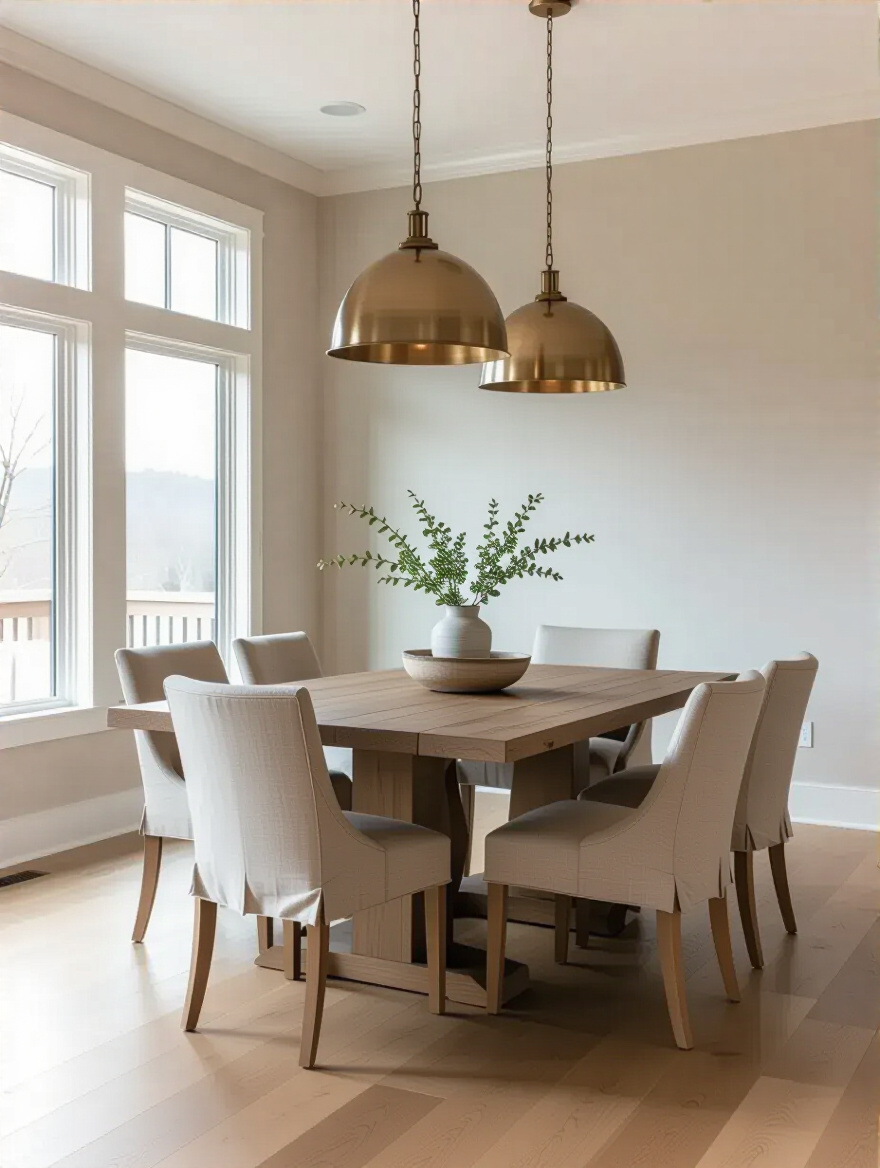
Mastering neutrals is about understanding their secret souls, their subtle undertones. Is it a warm gray with a hint of brown, or a cool gray with a whisper of blue? Holding the swatch up to your furniture and fabrics will reveal its true nature. The joy of a neutral room is in its layers. You can bring in color with a bowl of fresh-picked flowers, a new set of patterned napkins, or a vintage rug, and the room will feel completely new without ever having to repaint. It’s the ultimate in slow, sustainable decorating.
From the quiet beauty of neutrals, let’s talk about colors that speak directly to our appetites.
9. A Dash of Color to Whet the Appetite
It’s true what they say—some colors can actually make food taste better! Rich, delicious colors like ruby reds, deep oranges, and sunny yellows can subtly stimulate conversation and make a meal feel more vibrant and festive. You see this magic at work in so many cozy little trattorias with their warm red-checkered tablecloths and terracotta walls.
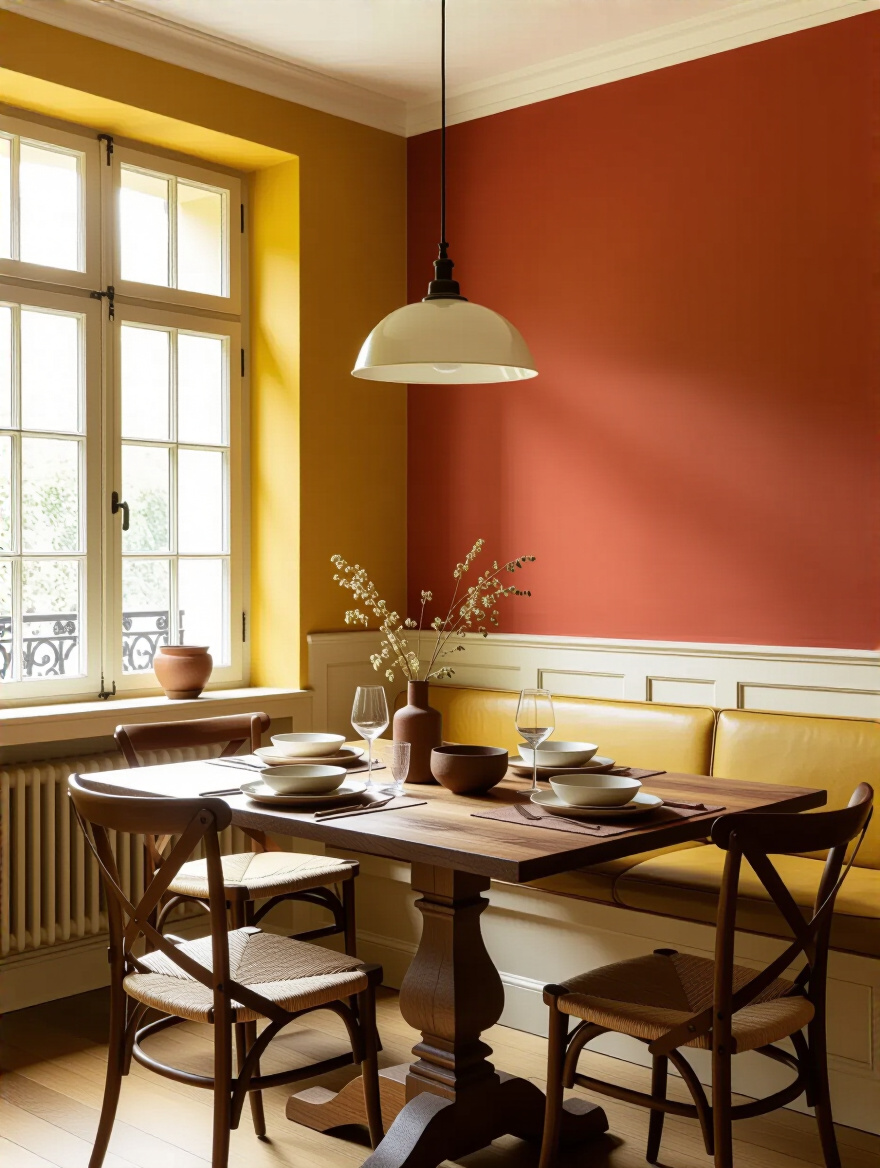
Now, you don’t need to paint your whole room fire-engine red to get this effect. A little goes a long way. I love the idea of a deep, raspberry-colored accent wall behind a sideboard, or painting the inside of a dining nook a warm, spicy mustard yellow. These touches of appetizing color add a sense of joy and conviviality. You can balance them with creamy whites and natural woods, so the effect is cheerful and welcoming, not overwhelming.
For those who want to turn every dinner into a truly special occasion, we can look to the most dramatic colors of all.
10. Create a Little Drama with Deep, Velvety Jewel Tones
If you want your dining room to feel like a secret, velvet-lined jewelry box, then deep jewel tones are for you. Imagine walls painted in a rich emerald green, a deep sapphire blue, or a dramatic aubergine. These colors are pure, unapologetic romance and sophistication. They absorb the light and create an incredibly intimate, enveloping atmosphere that makes every meal feel like a special event.
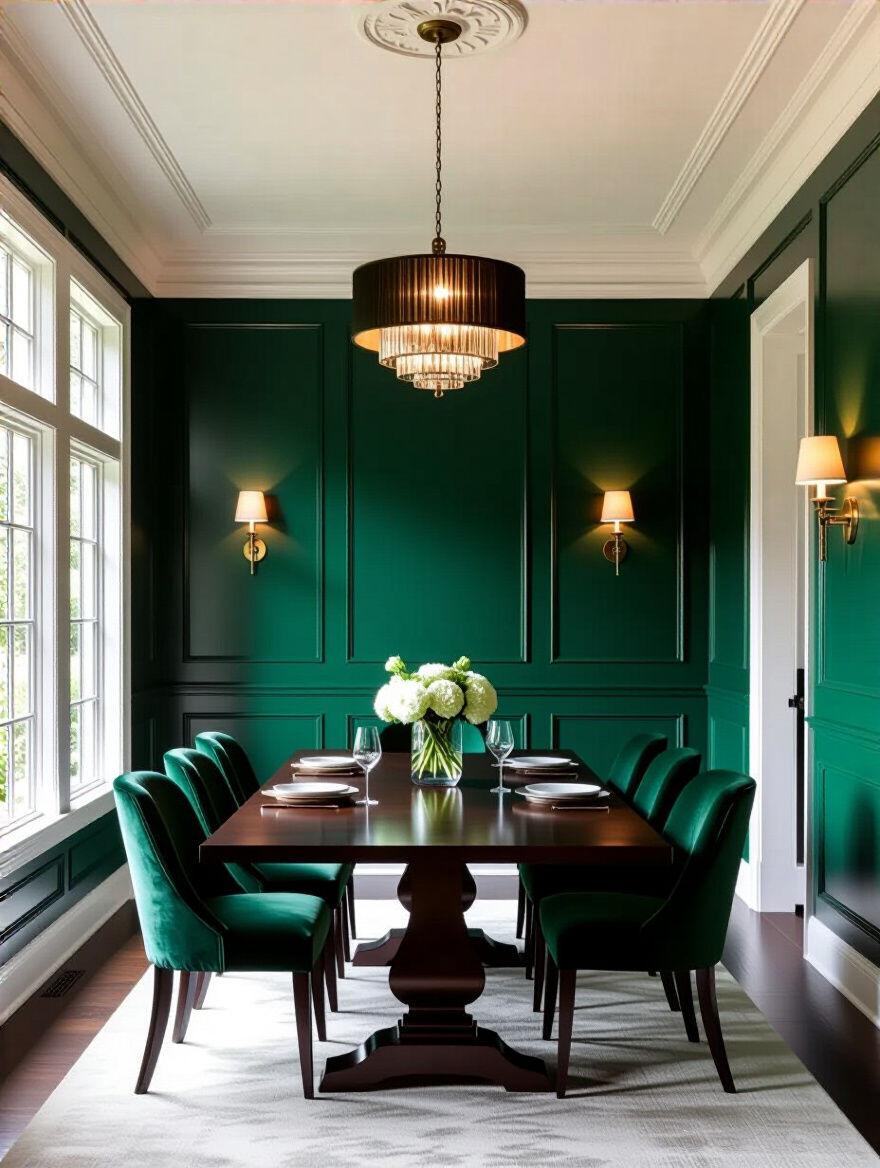
These deep, moody colors are magnificent backdrops for shining things. A gold-framed mirror, a crystal chandelier, or a set of silver candlesticks will absolutely sparkle against a jewel-toned wall. To keep the room from feeling too dark, especially if it’s smaller, I make sure the trim and ceiling are a crisp, clean white to provide a bit of lift. It’s a bold choice, but for the right home, it creates a dining experience that is nothing short of magical.
Strategic Application: The Little Secrets of Brush and Wall
Once you have an inkling of the color you love, there are a few little tricks to applying it that can make a world of difference. It’s about more than just rolling paint on four walls; it’s about using color to add character and grace.
11. Give the Room a Heartbeat with an Accent Wall
An accent wall shouldn’t be a random, impulsive splash of color. It needs a purpose. Think of it as the backdrop for the most important part of your room. The best place for an accent wall is almost always the wall behind your dining table or a beautiful buffet, the one you see first when you walk in. It says, “Look here. This is the heart of the room.”
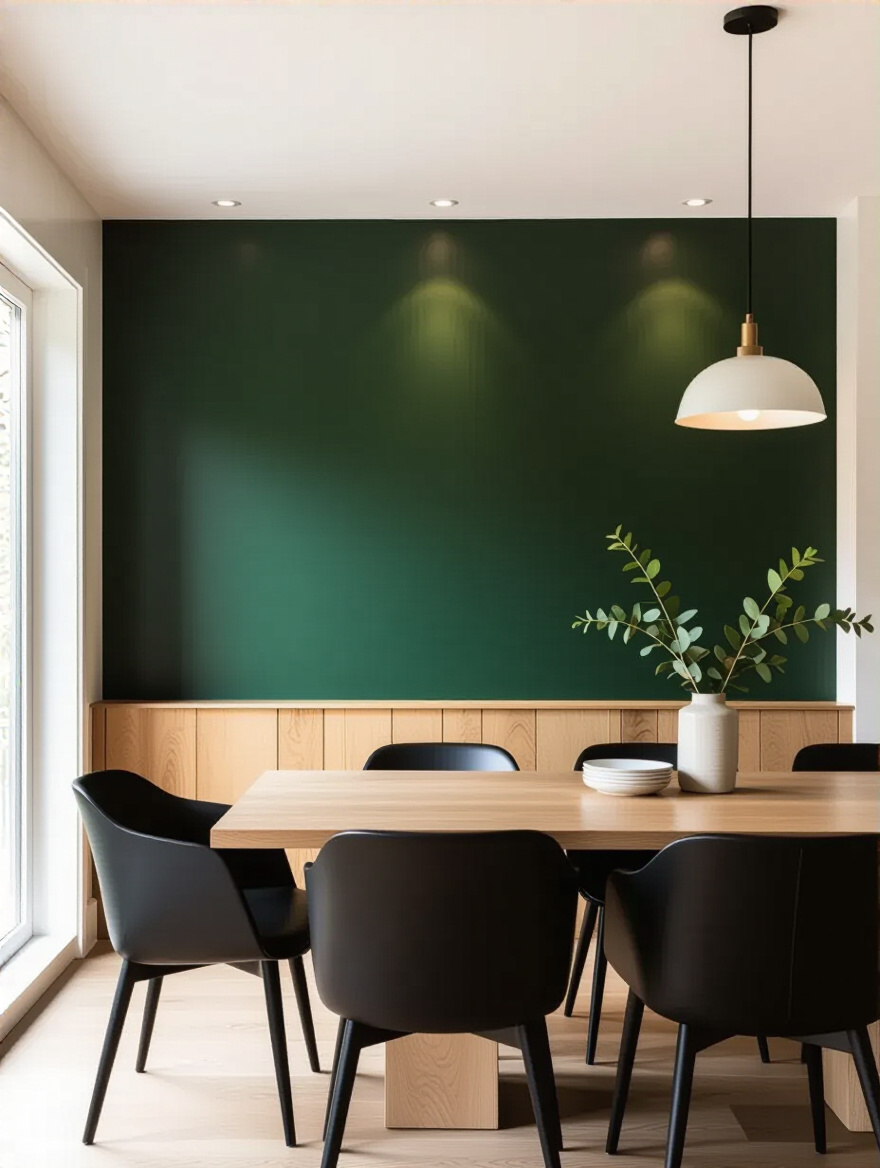
I especially love using textures for an accent wall. A soft, nubby grasscloth wallpaper can add warmth and sound absorption. A wall of Reclaimed Wood can bring in a rustic, heartfelt charm. Or even just a single wall in a deeper, richer shade of the main color can add incredible depth without shouting. The key is that it must feel intentional, like it’s anchoring the whole space together.
After giving the room a focal point, let’s not forget about the details that frame it.
12. Let the Ceiling and Trim Join the Conversation
So often we forget about the “fifth wall”—the ceiling! Leaving it builder-white can sometimes feel a bit abrupt, like it’s not really part of the room. A wonderful secret is to paint the ceiling a much, much lighter version of your wall color. Or for a truly cozy, modern feel, paint the walls, trim, and ceiling all the same color, but in different finishes. It creates a seamless, enveloping feeling that is incredibly chic.
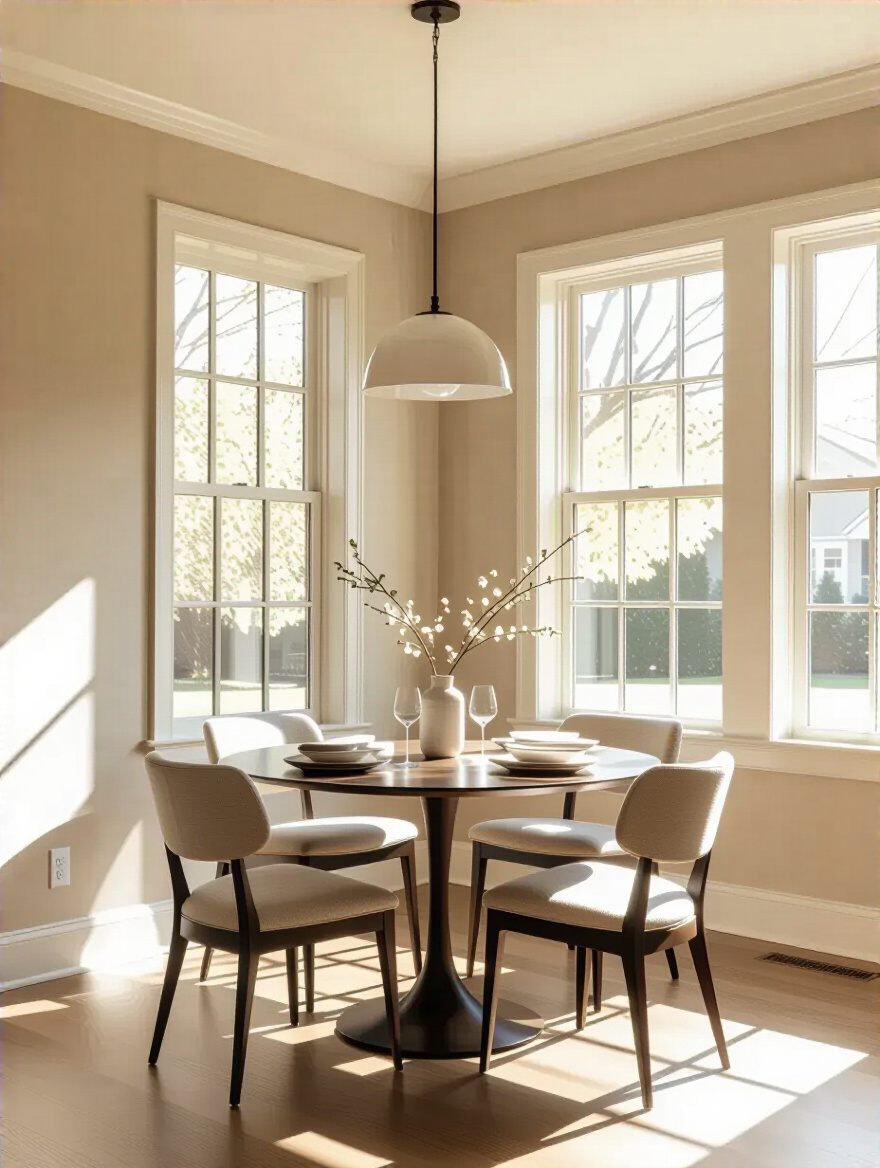
For a more traditional look, crisp white trim against a colored wall is like a perfectly starched collar—it’s classic and defines the architecture beautifully. The trick is to make sure the white is a good companion for your wall color. If you have warm walls, choose a creamy, warm white. If you have cool walls, a cleaner, brighter white will look best. These little details are what make a room feel truly finished and thoughtfully designed.
Beyond the color itself, the texture, or finish, of the paint plays its own subtle role.
13. Choose a Finish That’s Both Beautiful and Hardworking
The finish of your paint—whether it’s matte, eggshell, or satin—changes how the color looks and how it lives in your home. A flat, matte finish is like velvet. It’s gorgeous and sophisticated, and it hides imperfections beautifully, but it’s a bit delicate and harder to clean. I love it for a formal, less-used dining room.
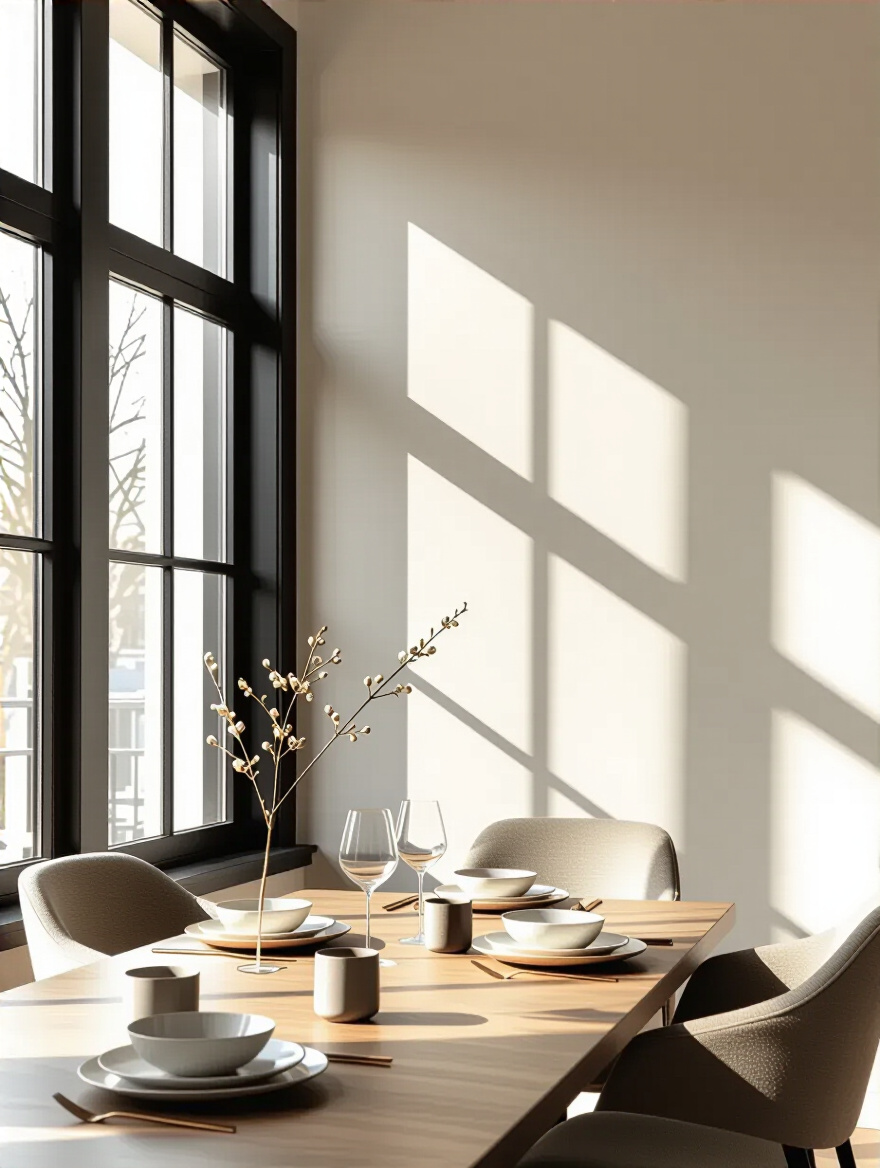
For a family dining room, where there might be little fingerprints or splashes of sauce, an eggshell or satin finish is your best friend. They have a soft, gentle glow that reflects a bit of light and they are much easier to wipe clean without damaging the color. They strike that perfect balance between beauty and practicality, which is the very soul of cottage living. A room should be for living in, not just for looking at.
And of course, we must consider how our color will look after the sun has gone to bed.
14. Make Sure Your Color Is Beautiful by Candlelight
This is where so many people get their hearts broken. They choose a perfect color in the daylight, only to find it turns into a completely different, and often unwanted, creature under the evening glow of their chandelier. I once had a friend who chose a lovely warm greige, but her light bulbs had a slightly cool cast, and at night, her dining room walls looked faintly, mysteriously… purple.
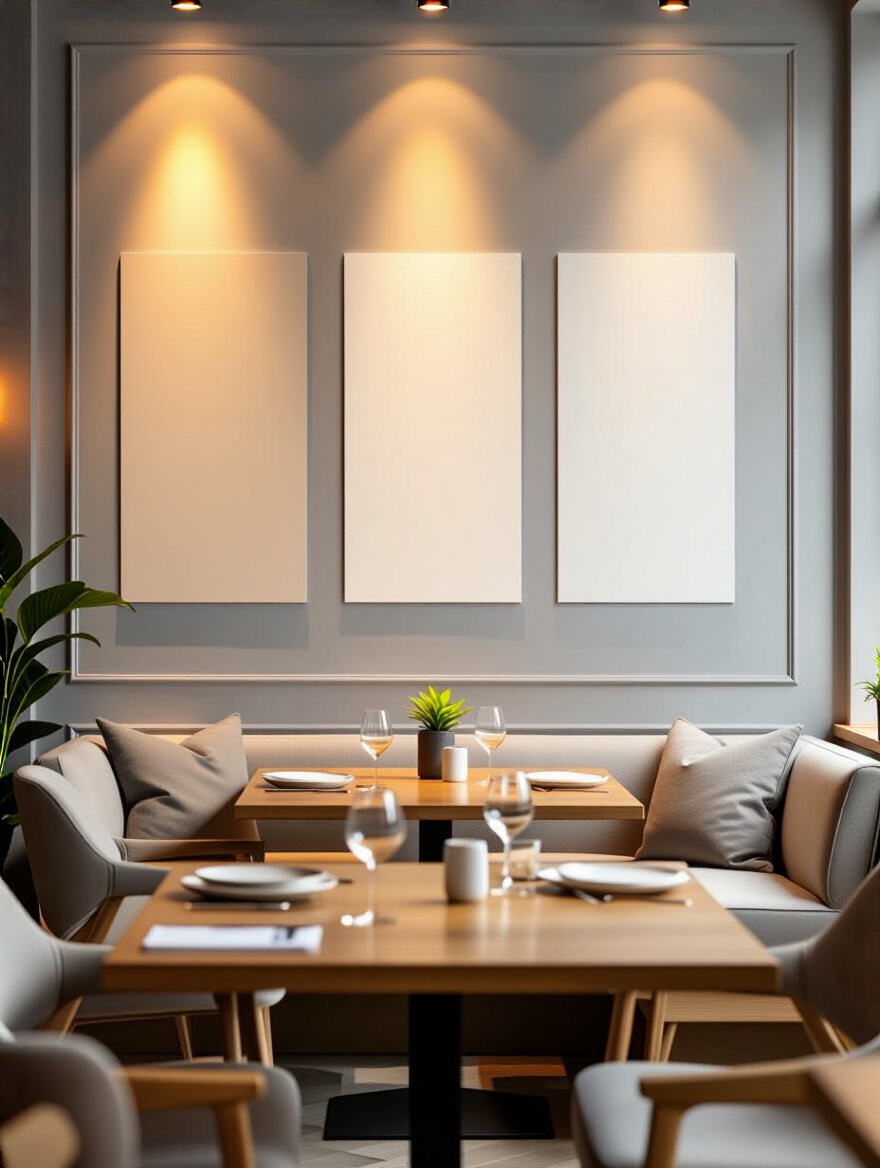
Before you commit, you must test your color at night, with all the lights on that you would typically use for dinner. See how the color looks under lamplight and, if you’re like me, by candlelight. A good color will hold its own and feel just as beautiful and welcoming in the evening as it does in the morning sun. Using warm-toned light bulbs (look for 2700K on the package) can help preserve the coziness of most colors.
For a touch of bespoke charm, you can play with painting the wall in more than one color.
15. Add a Touch of Old-World Charm with Two-Tone Walls
I adore the charm of a two-toned wall. It feels so classic and adds instant architectural character, even in a simple room. This is where you paint the lower portion of the wall a different color from the top, often divided by a chair rail. Painting the bottom third a deeper, anchoring color with a lighter color on top can make the ceilings feel higher.
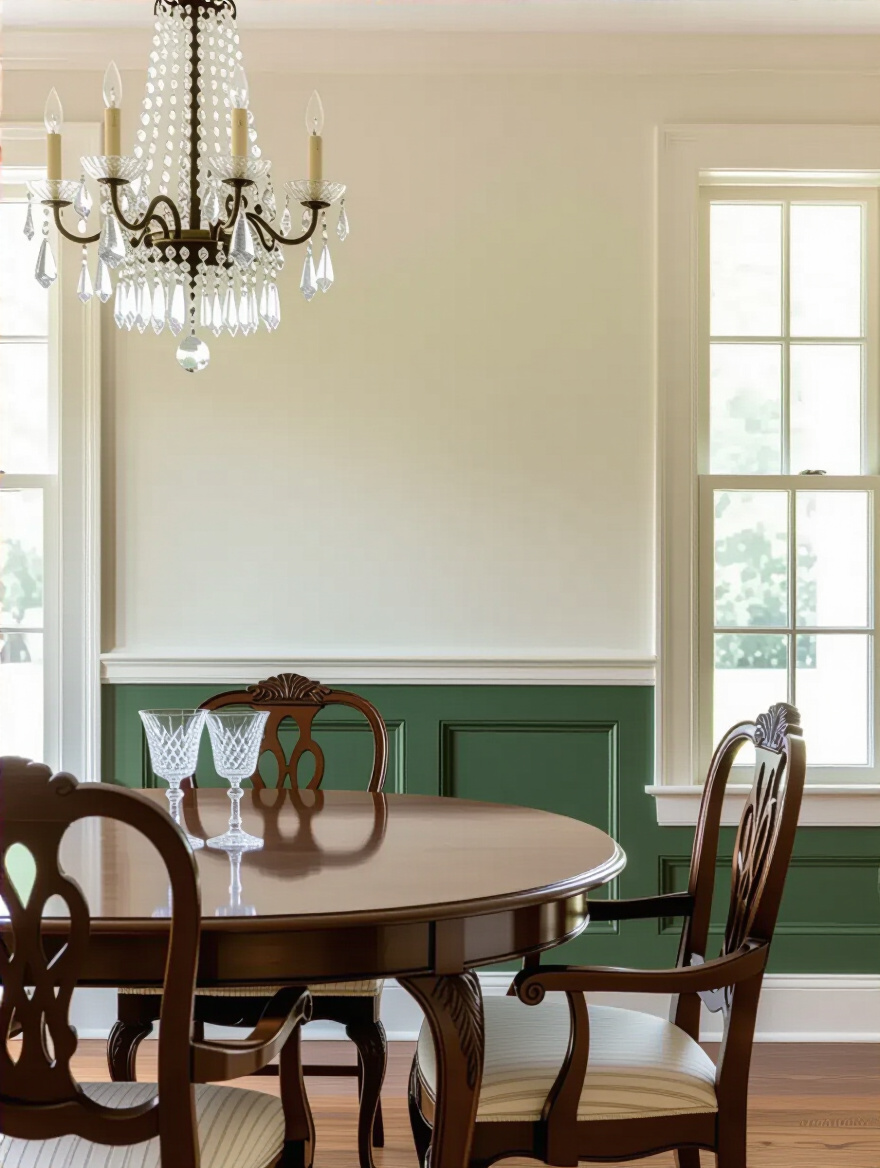
It’s a wonderful way to use a bolder color without it taking over the entire room. Imagine the bottom of the wall in a sturdy, deep blue, with a soft, creamy white on top. It feels grounded and airy all at once. My little shortcut for a perfectly crisp line is to paint the lighter color first, let it dry, apply your painter’s tape, and then run a thin line of clear caulk along the tape’s edge. It seals it perfectly, and you’ll have a line so sharp it will make your heart sing.
Beyond the Brush: For a Love That Lasts
We’re almost there! These final touches are about ensuring your choice is one you will love for years to come. It’s about practicality and personalization, making sure your dining room is a true and lasting reflection of you.
16. Never, Ever Trust a Tiny Paint Chip
If you take away only one piece of my advice, let it be this: please, never choose your color from that tiny one-inch paper square. It is a liar! A color changes so much when it’s on a large wall, surrounded by your light and your furniture. The only way to know the truth is to test a large sample.
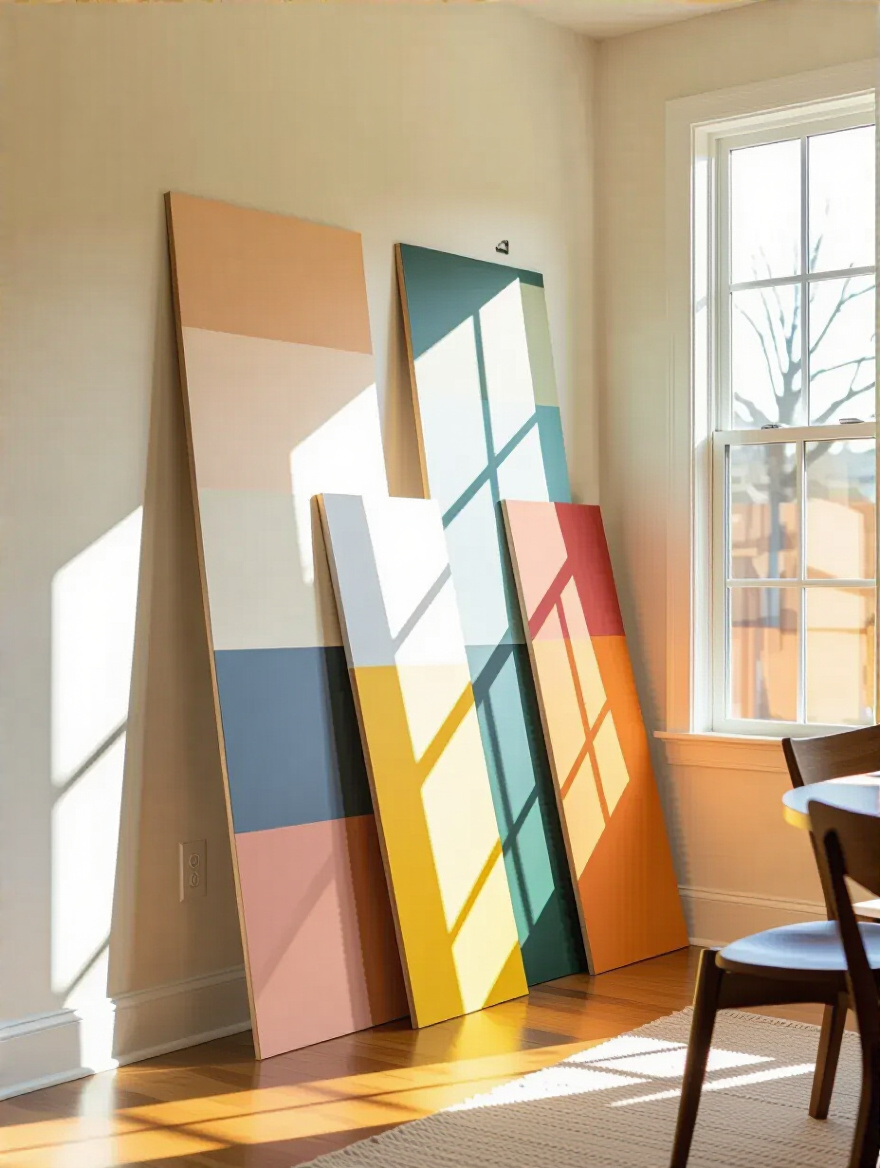
My favorite method is to paint a large piece of poster board (at least two feet by two feet) with your sample pot. This way, you can move it around the room. You can hold it up next to your curtains, behind your dining table, on the darkest wall, and on the brightest wall. Live with these sample boards for a few days. See them in all kinds of light. This little bit of patience will save you so much potential heartache and the cost of a repaint.
Once you’ve found the color, you want to make sure it will stand up to all the life that happens in this room.
17. Choose a Paint That Can Handle a Little Life (and Spilled Milk)
A dining room is a place of gathering and, let’s be honest, a place of occasional messes. You want a wall color that can be wiped clean without a fuss. This is where choosing a high-quality, washable paint is so important. It’s a bit more of an investment upfront, but it pays for itself tenfold in peace of mind.
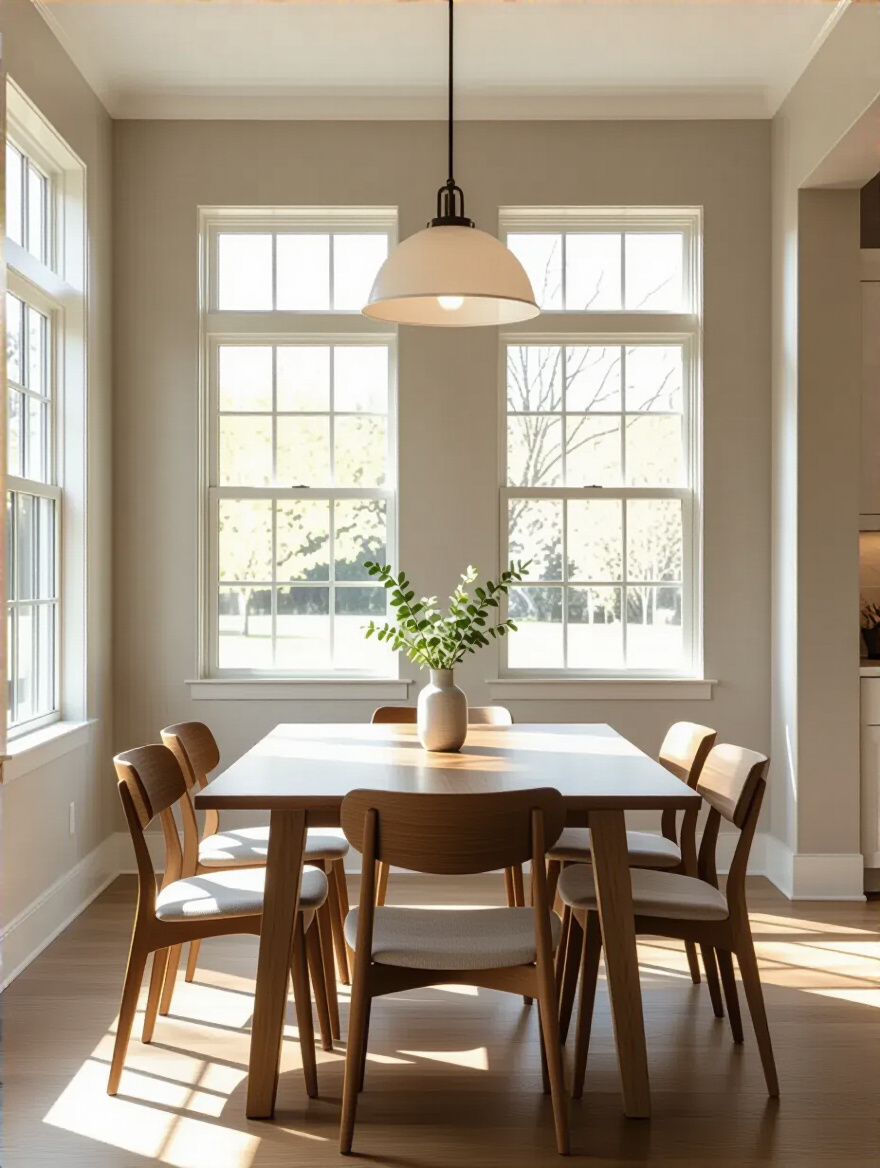
This is part of the “slow decorating” ethos for me. Choose well once, with durable, quality materials, so you don’t have to constantly be fixing and redoing. Look for paints labeled as “scrubbable” or those with a satin or eggshell finish. This means that when a bit of blackberry pie flies across the room, you can gently wipe it away, and your wall will be as good as new, ready for the next happy, messy meal.
And now, for my favorite part: bringing all your cherished items into harmony.
18. Let Your Wall Color Be a Quiet Friend to Your Art and Textiles
The most beautiful rooms are the ones where everything feels like it belongs together. Your wall color should be a gentle, supportive friend to your beautiful artwork, your treasured vintage rug, or the fabric on your dining chairs. It shouldn’t be competing for attention. A truly sophisticated wall color knows when to be the backdrop and let other things be the star.

A lovely trick is to pull one of the quietest, most subtle colors from a piece of art or a patterned textile and use a version of that for your walls. This creates an instant, effortless harmony. Your eye travels around the room and feels a sense of calm and connection. It’s this visual quiet that makes a space feel truly restful and curated, like every single piece was chosen with love and intention.
Finally, let’s choose a color that gives you the freedom to change and grow.
19. Choose a Color That Gives You Room to Grow
Our tastes and stories change over time. The ultimate act of thoughtful design is choosing a wall color that is adaptable and allows your home to evolve with you. While a very bold, trend-driven color can be exciting for a season, a more timeless, flexible neutral gives you the freedom to change your décor without having to repaint the entire room.
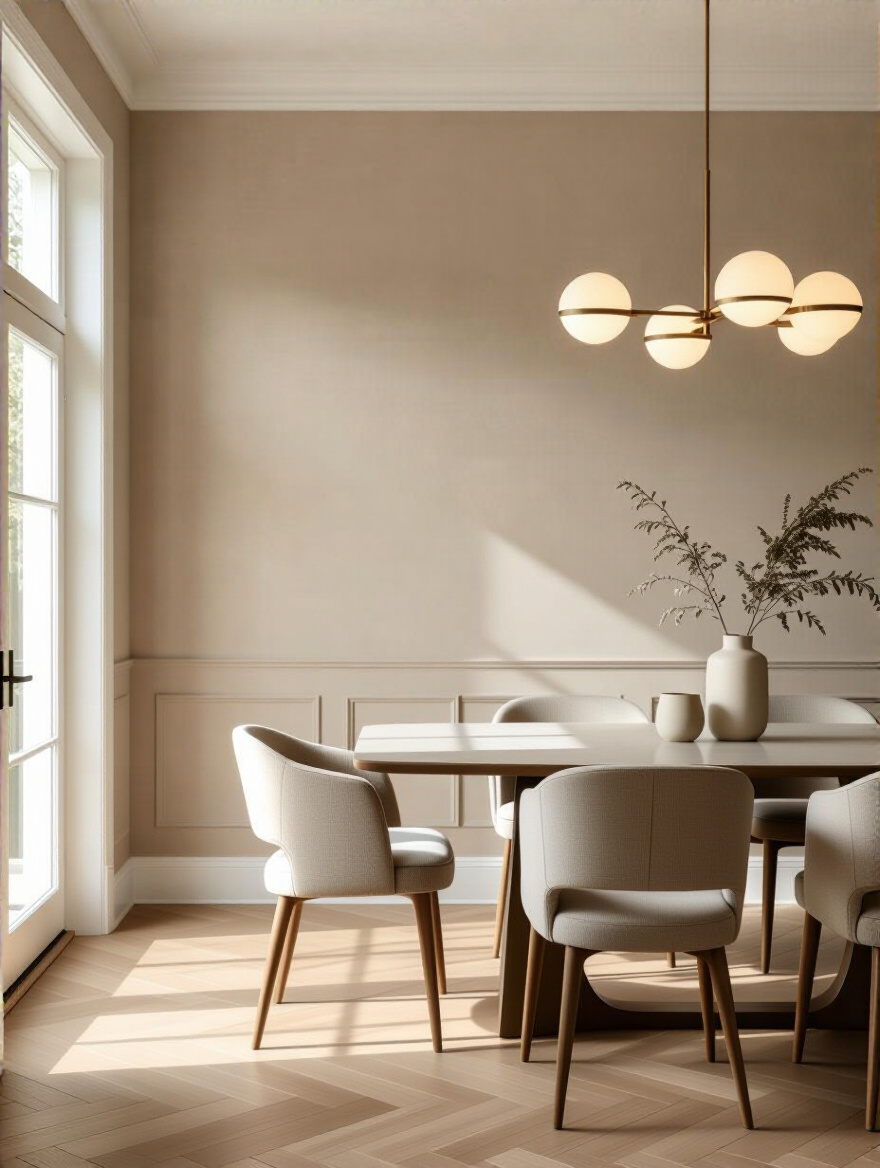
Think of it as creating a “forever canvas.” A soft, complex neutral can feel warm and cozy in the winter with velvet pillows and a wool throw, and then feel light and airy in the summer with linen curtains and fresh greenery. It’s a quiet, dependable friend that gives you the gift of flexibility. It ensures your dining room will be a beloved backdrop for all the chapters of your life still to come.
Conclusion
Choosing a color for your dining room is so much more than a decorating task; it’s an act of love. It’s about creating a space that holds your family, your friends, and your most cherished memories in a warm embrace. By listening to your room’s light, honoring its shape, and letting your heart guide the mood, you can find a color that feels less like paint and more like a part of your home’s soul. Don’t rush the process. Let it be a gentle discovery. Take these little secrets and a spirit of adventure, and you will create a dining room that is not just beautiful, but a true and heartfelt reflection of you. Your perfect gathering space is waiting.
